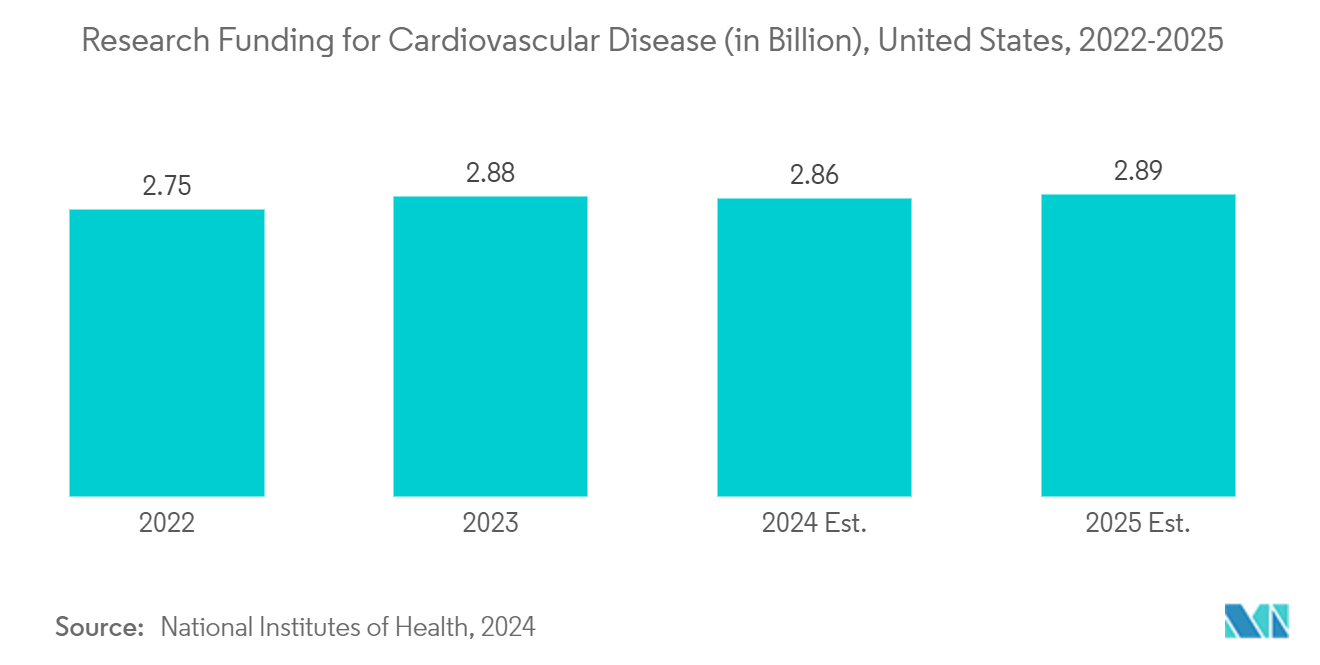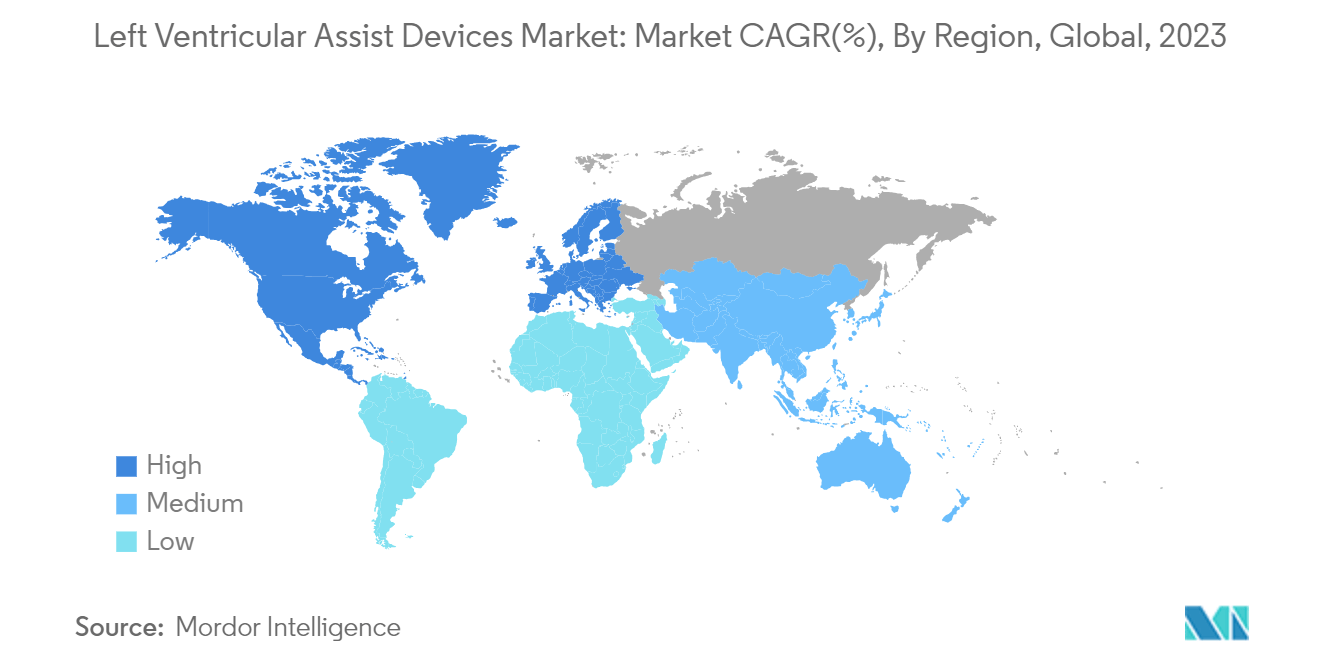Market Trends of Left Ventricular Assist Devices Industry
The Centrifugal Flow Segment is Expected to Witness Significant Growth During the Forecast Period
Centrifugal flow left ventricular assist devices utilize a spinning impeller to ensure a steady blood flow from the left ventricle to the aorta. This method stands in contrast to axial flow left ventricular assist devices, which employ a distinct mechanism for blood movement. Centrifugal flow left ventricular assist devices present numerous benefits for patients facing cardiac failure or arrest. These devices ensure a steady and efficient blood flow, catering to patients with diverse cardiac output levels. Their straightforward design, often featuring fewer moving parts than axial flow counterparts, may enhance reliability.
The centrifugal flow left ventricular assist devices segment is expected to witness significant growth during the forecast period owing to factors such as the high burden of heart failure and cardiac diseases, advantages offered by centrifugal flow left ventricular assist devices, and the rising number of research studies.
Numerous studies have delved into the potential and long-term outcomes of fully magnetically centrifugal left ventricular assist devices. For instance, a February 2024 article in the European Heart Journal spotlighted real-world insights from the ELEVATE registry. The findings revealed a 63.3% overall survival rate for primary implants of the fully magnetically centrifugal left ventricular assist devices. Moreover, patients with advanced heart failure in the primary implant group experienced fewer adverse events during extended follow-ups and reported enhanced quality of life and functional capacity after five years. As the proven effectiveness of centrifugal left ventricular assist devices comes to light, a surge in their adoption is anticipated, propelling growth in this segment.
Given the myriad advantages of centrifugal flow left ventricular assist devices and the increasing volume of research validating their efficacy for cardiovascular patients, this segment is set for growth in the foreseeable future.

North America is Expected to Hold a Significant Share in the Market During the Forecast Period
North America is poised for substantial growth during the forecast period, driven by the rising prevalence of cardiovascular diseases and proactive R&D initiatives by leading market players.
In the United States, the rising incidents of out-of-hospital cardiac arrests (OHCA) underscore the urgent need for effective interventions to boost survival rates and improve long-term outcomes. For instance, data from the United States Centers for Disease Control and Prevention (CDC) in May 2024 reveals that annually, over 356,000 individuals in the United States face an out-of-hospital cardiac arrest. Consequently, this high number of OHCA cases is set to propel the growth of the left ventricular assist devices market, driven by a heightened demand for advanced cardiac support solutions.
Additionally, as heart attack incidents rise, the demand for cutting-edge medical interventions like left ventricular assist devices (LVADs) increases, further bolstering the market growth. For instance, according to the Centers for Disease Control and Prevention, in May 2024, around 805,000 individuals in the United States suffered a heart attack annually. Of these, 605,000 experience it for the first time, while 200,000 have a prior history. Given the significant impact of myocardial infarctions on the population, the demand for innovative solutions like LVADs is projected to surge during the forecast period.
Furthermore, key players are increasingly collaborating, a trend poised to drive the development of innovative left ventricular assist devices (LVADs) in the market. This momentum is set to fuel the market's growth during the forecast period. For instance, in December 2023, Tampa General Hospital (TGH), in partnership with USF Health Morsani College of Medicine, successfully implanted its 500th HeartMate Left Ventricular Assist Device (LVAD). Notably, this device stands out as the sole, durable pump in the United States with implantation approval, marking it as the pinnacle of advancement in its domain.
Therefore, owing to factors such as the high burden of cardiovascular diseases among the population and collaboration strategies adopted by hospitals and colleges, the studied market is expected to grow during the forecast period.


